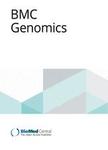版权所有:内蒙古大学图书馆 技术提供:维普资讯• 智图
内蒙古自治区呼和浩特市赛罕区大学西街235号 邮编: 010021

作者机构:Univ Sao Paulo Dept Comp Sci & Math DCM FFCLRP Monte Alegre Ribeirao Pr SP Brazil
出 版 物:《BMC GENOMICS》 (BMC基因)
年 卷 期:2012年第13卷第5-Sup期
页 面:S3-S3页
核心收录:
学科分类:0710[理学-生物学] 07[理学] 09[农学] 0836[工学-生物工程]
基 金:Coordenação de Aperfeiçoamento de Pessoal de Nível Superior, CAPES Ministério da Educação, MEC
主 题:Gene Ontology Unify Modeling Language Object Constraint Language Unify Modeling Language Modeling Biomedical Ontology
摘 要:Background: Ontologies have increasingly been used in the biomedical domain, which has prompted the emergence of different initiatives to facilitate their development and integration. The Open Biological and Biomedical Ontologies (OBO) Foundry consortium provides a repository of life-science ontologies, which are developed according to a set of shared principles. This consortium has developed an ontology called OBO Relation Ontology aiming at standardizing the different types of biological entity classes and associated relationships. Since ontologies are primarily intended to be used by humans, the use of graphical notations for ontology development facilitates the capture, comprehension and communication of knowledge between its users. However, OBO Foundry ontologies are captured and represented basically using text-based notations. The Unified Modeling Language (UML) provides a standard and widely-used graphical notation for modeling computer systems. UML provides a well-defined set of modeling elements, which can be extended using a built-in extension mechanism named Profile. Thus, this work aims at developing a UML profile for the OBO Relation Ontology to provide a domain-specific set of modeling elements that can be used to create standard UML-based ontologies in the biomedical domain. Results: We have studied the OBO Relation Ontology, the UML metamodel and the UML profiling mechanism. Based on these studies, we have proposed an extension to the UML metamodel in conformance with the OBO Relation Ontology and we have defined a profile that implements the extended metamodel. Finally, we have applied the proposed UML profile in the development of a number of fragments from different ontologies. Particularly, we have considered the Gene Ontology (GO), the PRotein Ontology (PRO) and the Xenopus Anatomy and Development Ontology (XAO). Conclusions: The use of an established and well-known graphical language in the development of biomedical ontologies provides a more